South Africa has long been a renowned wildlife and holiday destination, with “the fairest Cape of all“, Kruger National Park, and the Garden Route high on many visitors’ bucket lists. But did you know that South African food is some of the best cuisine on the planet?
South African food is a delightful fusion of flavours and culinary traditions that reflect the nation’s rich history and multiculturalism. Think of it as a blend of African, Dutch, French, Indian, and Southeast Asian influences, with a focus on hearty, flavourful, and satisfying dishes.
Must-try local dishes include iconic boerewors, bobotie, biltong, and bunny chow, beloved by so many. South Africans love their meat, so the country’s cuisine includes beef, pork, mutton, and lamb, as well as an array of venison like ostrich, kudu, springbok, and even crocodile!
Whether you’re a fan of spicy curries, savoury grilled meats, flavourful stews, or delectable sweet confections like melktert or koeksisters, South African food has something to delight every palate. Here are 10 of the best dishes to try on your next South African safari.
1. Bunny Chow
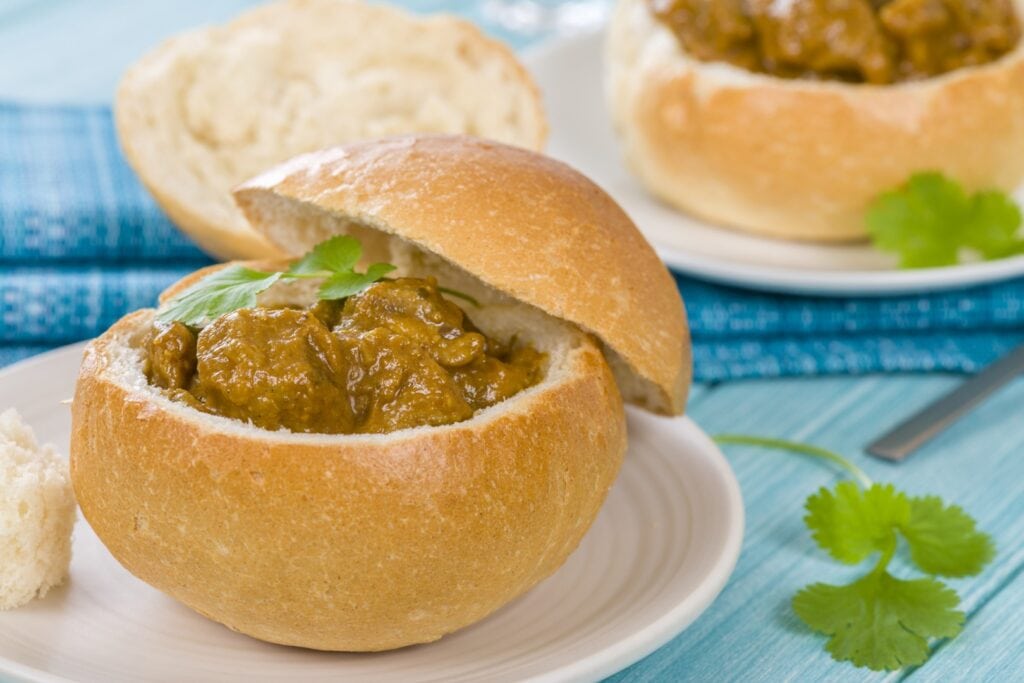
No culinary journey in South Africa is complete without trying a “bunny”. Don’t worry, it’s not an actual rabbit. A bunny chow is a hollowed-out half or quarter loaf of bread filled with curry, typically served with a bit of salad, or sambal, on the side.
It originated in Durban, South Africa, in the 1940s, and was created by Indian migrant workers as a convenient and transportable lunch. The loaf can be filled with various curries such as chicken, beef, mutton, bean, or vegetable, depending on personal preference.
The bread serves as both a “container” for the curry and as an accompaniment to be eaten with it! Bunny chows are eaten throughout the country these days, and has become a street food classic that’s enjoyed by people from all walks of life.
2. Bobotie
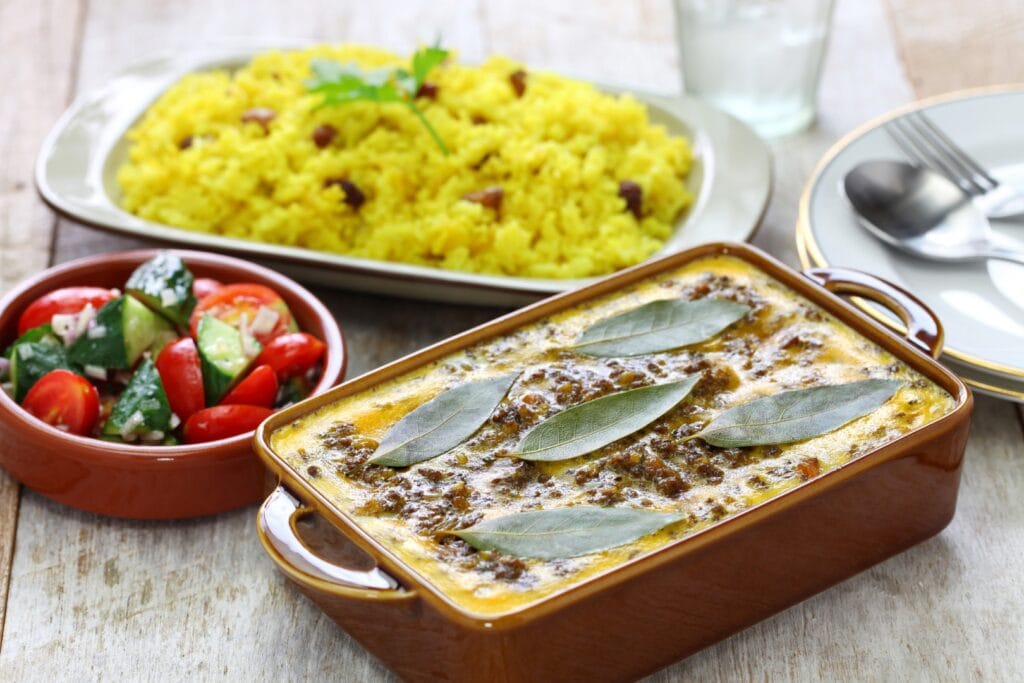
Considered by many to be South Africa’s national dish, there are many versions of bobotie, most based on treasured recipes that have been passed down through generations. It’s believed that the first recipe for bobotie dates back to a 1609 Dutch cookbook.
After it made its way to South Africa, it was adopted and refined – or arguably perfected – by the Cape Malay community, ultimately turning it into a South African dish. Bobotie is made from savoury spiced minced meat (beef, lamb, pork, chicken, or even ostrich) that’s baked with an egg and milk topping.
Various spices, curry powder, bay leaves, apricot jam, dried fruits, and nuts are added, depending on the recipe. You typically eat it with slightly sweet yellow rice with raisins added to it, desiccated coconut, blatjang (chutney), and sambals.
3. Biltong
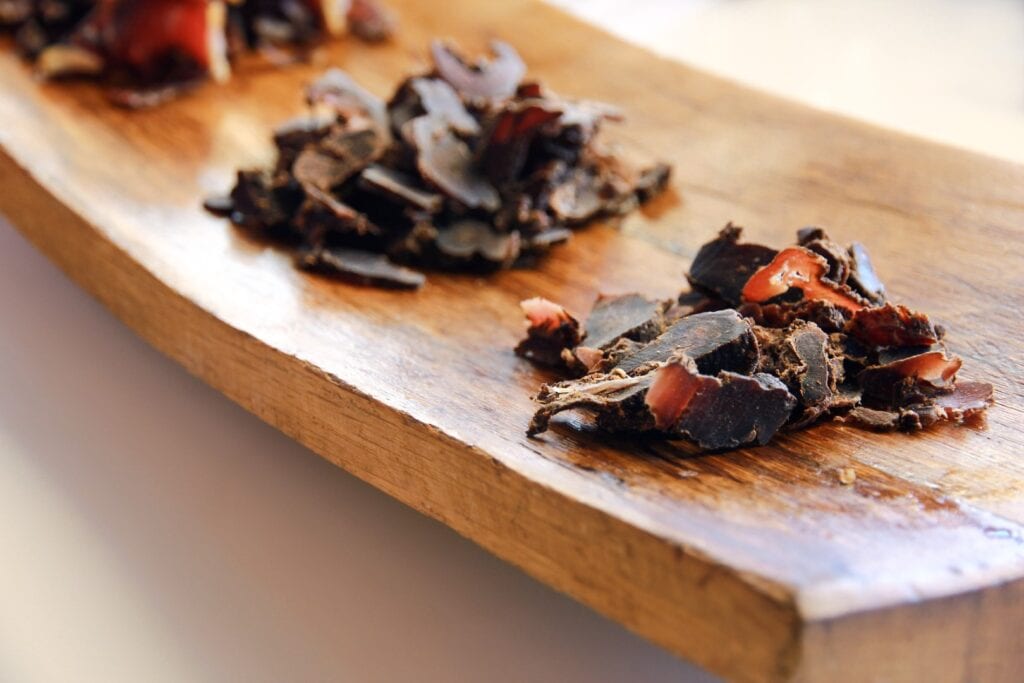
Biltong is a quintessential and hugely popular snack with meat-loving South Africans. In fact, it’s gained popularity worldwide for its delicious, salty taste. The word biltong is derived from the Dutch words “bil”, meaning meat or rump, and “tong”, meaning tongue, which is often the shape of the pieces of meat used to make biltong.
The meaty snack has its origins in the Great Trek era, when Dutch settlers, or Voortrekkers, moved from the Cape Colony into the interior of South Africa. They needed a reliable way to preserve meat during their long journeys, and viola – biltong was born! It’s superficially similar to American beef jerky, but that’s where the common ground ends.
To make it, skilled butchers marinate strips of beef in a mixture of vinegar, salt, sugar, and spices like pepper and coriander, depending on personal taste. The marinated meat is then hung out to air-dry. Today, biltong remains a beloved South African snack, cherished for its unique flavour and versatility. It’s available in every butcher shop, corner café, petrol station, and supermarket, and you can even try venison options like kudu and gemsbok (oryx).
4. Potjiekos
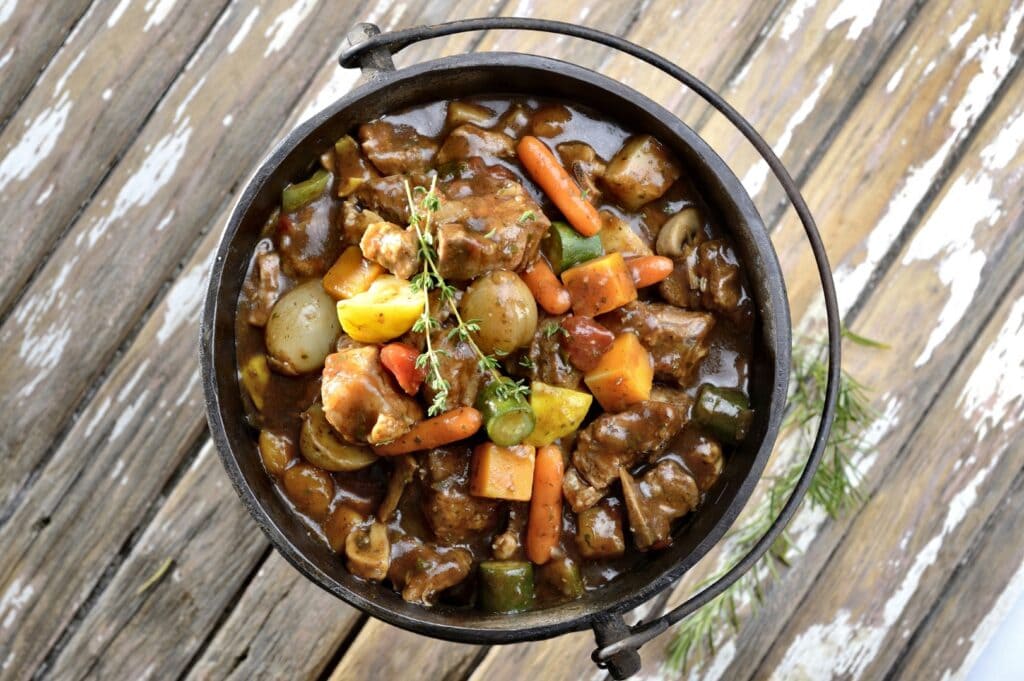
Potjiekos is another dish that was developed by the Voortrekkers during the Great Trek. It’s a stew-like South African dish cooked outdoors over an open fire in a round, three-legged cast-iron pot, known locally as a potjie (little pot). It’s an extremely versatile dish that people adapt to personal preferences and tastes. As with many South African dishes, everyone has their own recipes and techniques.
It’s also an efficient and delicious way of preparing a large amount of food with minimal effort. In essence, potjiekos is a slow-cooked stew, featuring a mix of vegetables, meat, and spices. It sits atop hot coals for hours, simmering to perfection in its own juices. A wide variety of meats are suitable for a potjie, but people often opt for less expensive cuts.
Potjiekos is famous for the range of delicious and complex flavours it develops and the exquisite tenderness of the meat cooked this way. Enjoying a potjie with friends and relatives perfectly embodies the spirit of the communal sharing of food so integral to South Africa’s food culture and cuisine.
5. The South African Braai: Pap en Vleis/Shisa Nyama
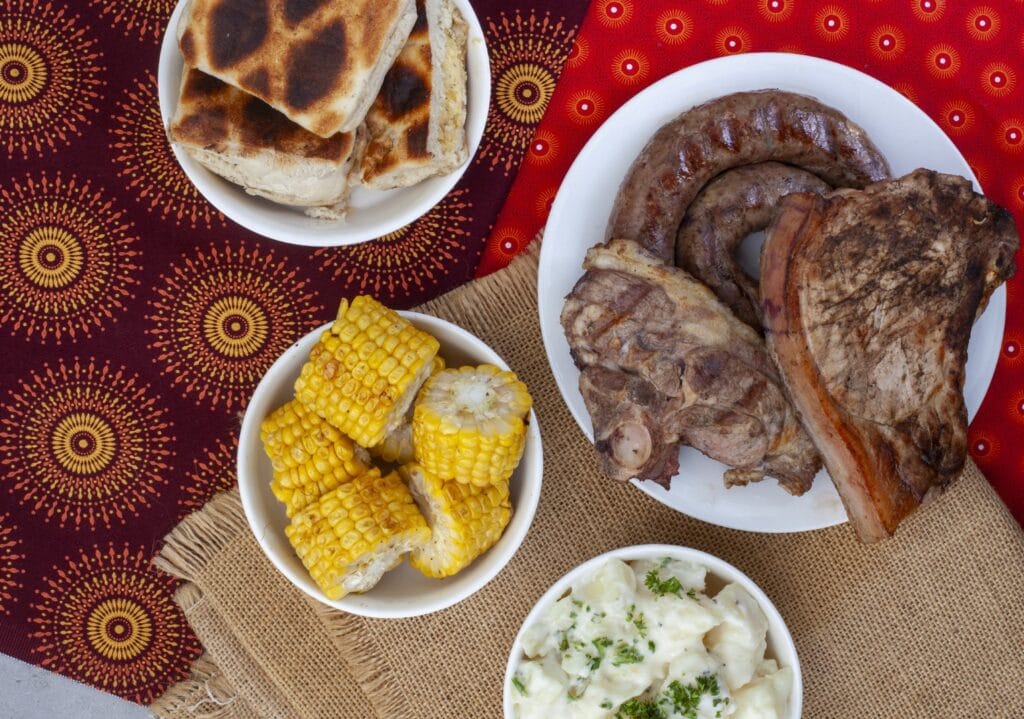
In Afrikaans, “pap en vleis” means maize porridge served with meat. “Shisa nyama” is the Zulu equivalent, with “shisa” meaning hot or burnt (i.e. cooked over an open fire) and “nyama” meaning meat. However, no matter where you go in South Africa, people call it braai. Whether you try it at a friend’s house or at a shisa nyama restaurant, the essence remains the same: it’s flame-grilled meat. However, it’s also South Africa’s favourite excuse to get together for social gatherings.
Depending on who’s cooking, the meat is served with pap, cornbread, or another starch, along with chakalaka, a spicy relish, or more conventional sides like potato salad and garlic bread. Another local favourite is mielies (corn on the cob). At any given South African braai, you might come across lamb, boerewors (South African sausage), beef, chicken, pork, kudu, springbok, eland, warthog, ostrich, or even seafood.
Often, the meat is marinated beforehand in the braai chef’s secret basting. The South African braai is an indelible part of South African food culture, resonating perfectly with the country’s love of good food enjoyed with family and friends.
6. Vetkoek
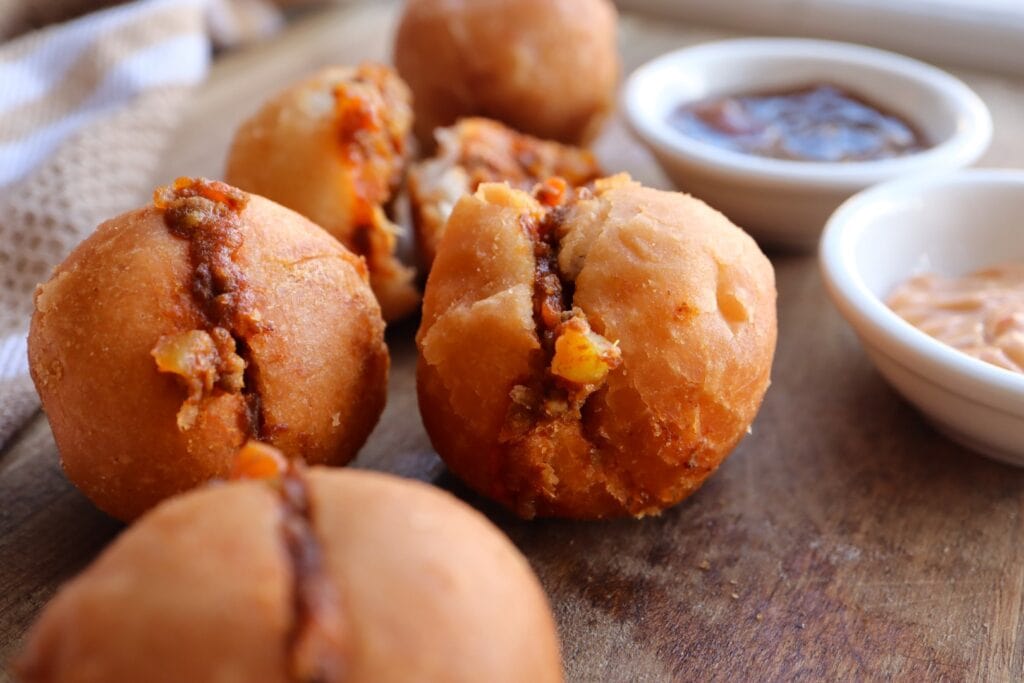
A delightful treat, vetkoek or “fat cake”, is a traditional South African pastry, it’s a South African dish that you absolutely must try. Originally made as a way to use up leftover bread dough, it’s become a much-loved dish on its own, similar to the Dutch oliebol and the Xhosa amagwinya.
Vetkoek is essentially a deep-fried bread dough ball best served hot. It can be served on its own, often just sprinkled with sugar, but it’s also served cut open and filled with delicious toppings. These include savoury mince mixtures, curries, cheese, butter, tuna and mayonnaise, or jam for a sweet version. Ideally, vetkoek should be crispy on the outside and delectably soft inside!
7. Umngqusho, Isitambu, or Samp and Beans
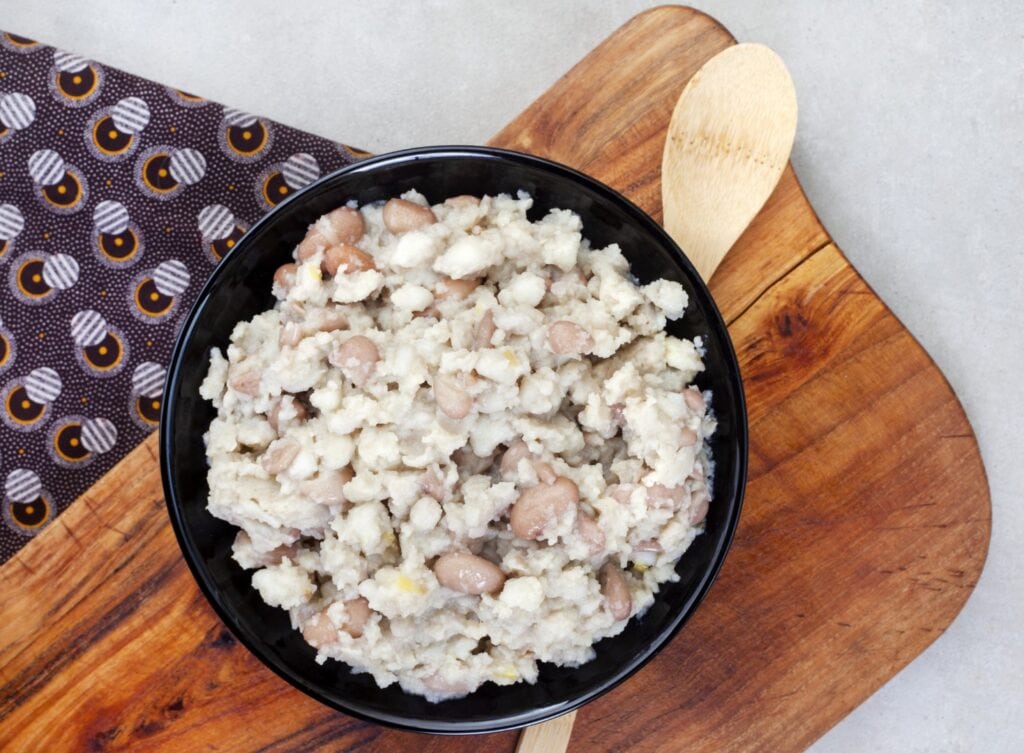
Umngqusho, a highly prized staple in traditional Xhosa culture, is extremely nutritious and packed with flavours. Reputedly one of Nelson Mandela’s favourite dishes, samp and beans is made from slowly cooked sugar beans and crushed maize kernels, known as samp.
It’s flavoured with chilli, onions, leeks, stock blocks, and butter or fat, and is a comforting and satisfying meal. Often served as a meal on its own, it can also be paired with other dishes like chicken, beef, mutton, or lamb stews. It’s traditionally served with umleqwa, a “hardbody chicken”, or lamb curry.
8. Chakalaka
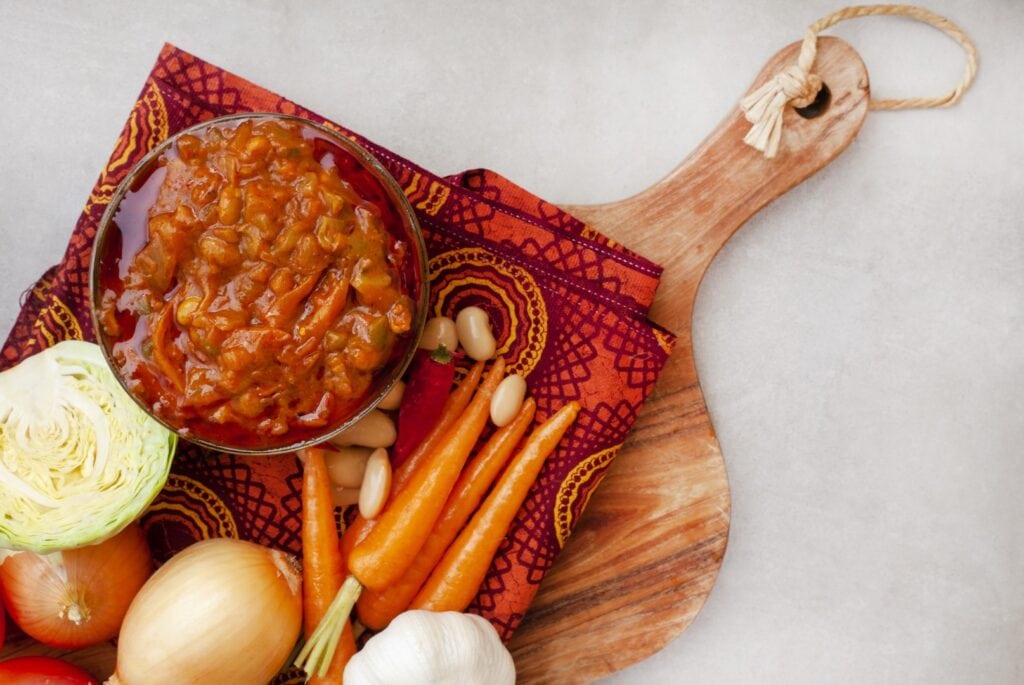
This spicy, delicious, and versatile vegetable relish is reputed to have originated in Johannesburg. As the story goes, migrant mine workers from Mozambique used various ingredients like tomatoes, beans, and chilli to create a flavoursome Portuguese-style relish to eat with their pap.
Many variations of the dish exist, with different versions including carrots, green peppers, onions, cabbage, and even butternut and sweetcorn. Flavourings like garlic and curry paste are used to add some oomph, and it can be served hot or cold.
Make sure to ask how spicy it is before you take a bite – some chefs can be a little too generous with the chilli! It can be served with bread, rice, pap, and other starches, and as an accompaniment to stews and curries, adding a spicy kick to every bite.
9. Melktert
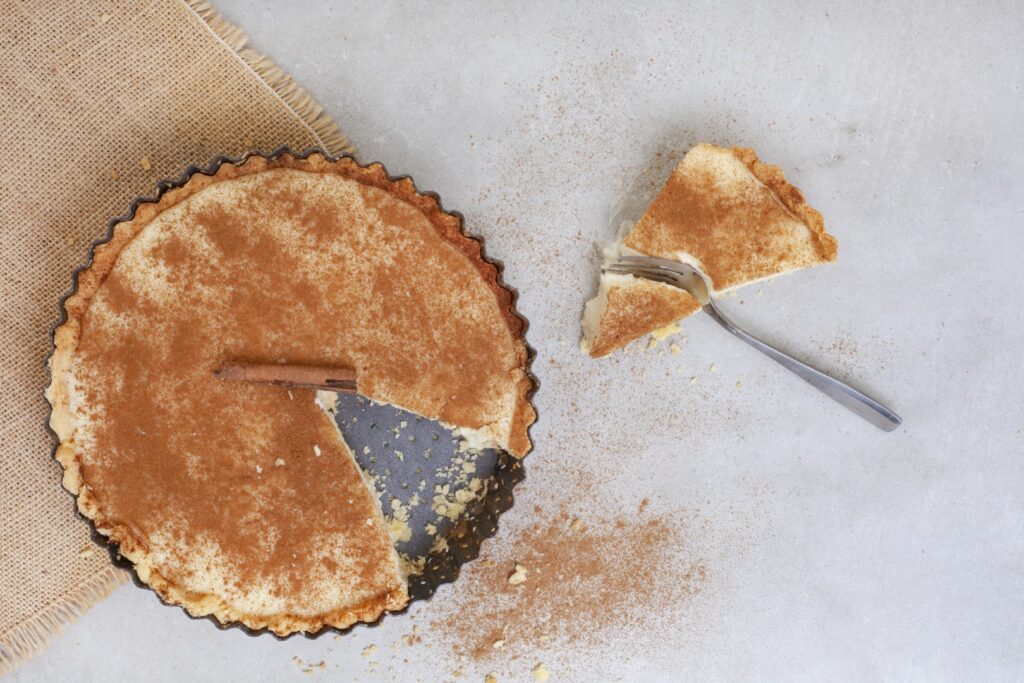
For many South Africans, traditional melktert or milk tart, conjures up images of home and childhood comfort food enjoyed with loved ones. It’s a South African sweet pastry that can be served with tea or coffee, or as a dessert after a meal.
Many South African bakers have jealously-guarded secret family recipes that originated in the Dutch colonial era in South Africa. The main components of a melktert are a sweet pastry crust and a deliciously creamy custard filling made from milk, sugar, and eggs. It can be served hot or cold, but is traditionally served cold with a generous sprinkling of cinnamon.
Melktert is a much-loved staple at every church fête, home industries outlet, and supermarket in South Africa. We even have a National Melktert Day on 27 February!
10. Koeksisters
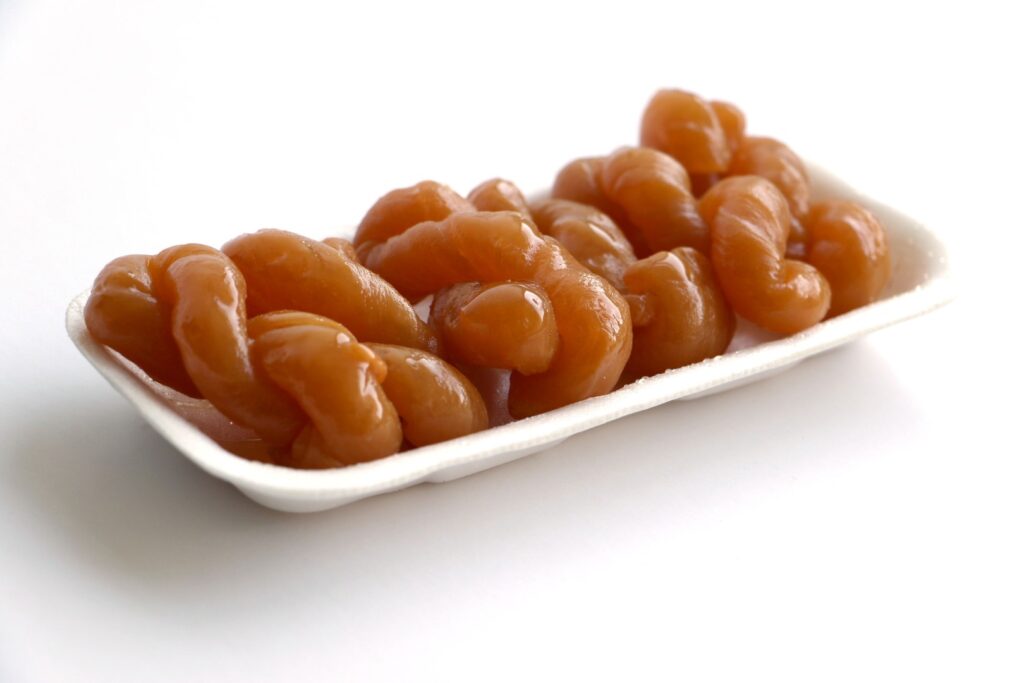
This is a diabolically sweet and addictive treat for serious sugar fans only! Koeksisters are twisted or braided deep-fried doughnut-like pastries. After deep-frying, the pastries are soaked in ice-cold syrup that has been left in the fridge overnight, which includes cinnamon, lemon, and ginger. This process ensures maximum absorption of the syrup while the outside of the koeksister remains crispy.
Koeksisters have a rich history dating back to the arrival of Dutch settlers in 1652. The name koeksister is derived from the Dutch/Afrikaans word “koek”, meaning cake. It’s interesting to note that another spicy and delicious, often coconut-covered version called “koe’sister”, exists in the Cape. This can be traced back to Indonesian, Malay, and Arabian culinary traditions. Both of these delectable sweet pastries have become deeply entrenched cultural icons in South African cuisine.
Has this glimpse into South African food and culinary traditions piqued your interest and awakened a desire to see – and taste – South Africa for yourself? We wouldn’t blame you. At Discover Africa, after all these years, we’re still amazed at the wealth of experiences South Africa has to offer its visitors. Whatever your dream safari holiday, rest assured that South Africa’s varied cuisine will enrich any South African trip.









 Copy Link
Copy Link
 Share on LinkedIn
Share on LinkedIn
 Share on Facebook
Share on Facebook
 Blog List
Blog List






















Written by Brendan White
• Travel Writer
Verified by Chrizaan Troch
• Africa Safari Expert
Part of the South Africa Safari Collection